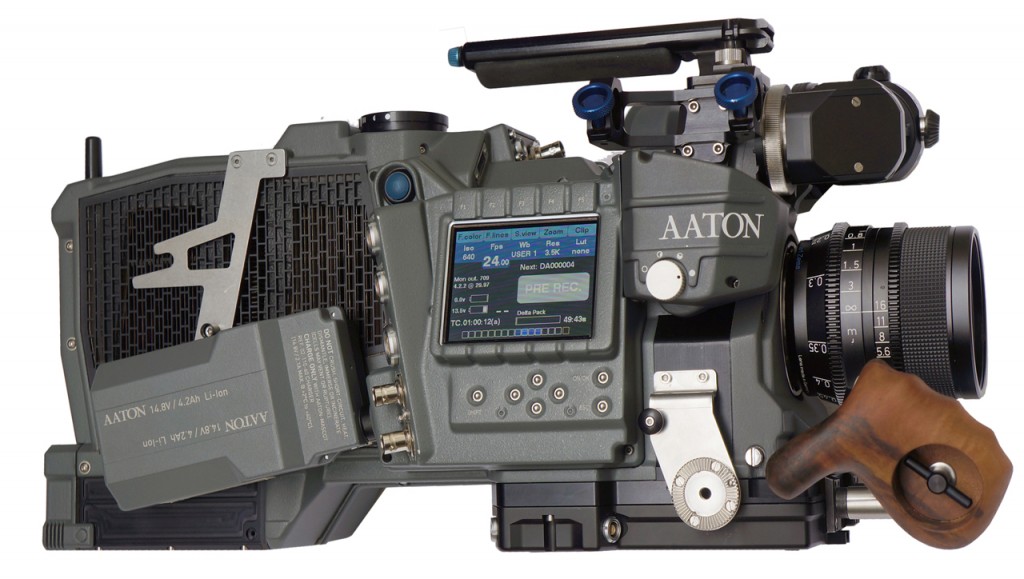Abelcine, the prestigious American equipment house makes available Raw files of the expected Aaton Penelope. This camera, presented at the last IBC, records in Cinema DNG 16b Raw files and will be compatible with the ACES color management protocol.
This camera presents important innovations: such as its physical displacement of the sensor (a Super 35 CCD manufactured by Dalsa) by half a pixel in each frame. The manufacturer claims that this process mimics the random grain of photochemical and increases the relative (moving) resolution of the image while eliminating problems such as electronic noise. This would take the camera from a native 3.5K to a relative 7K.
It also has a particular mechanical shutter whose structure allows, in addition to avoiding the annoying “jelly effect” of electronic shutters, to vary the speed without changing the shutter angle (thanks to “Venetian blinds” that allow altering the amount of light received by the sensor). This makes it possible to save ND filters in camera with the consequent elimination of IR problems.
ISO 800 (adjustable up to 100 by means of the aforementioned shutter system) 14 f-stops of dynamic range and the possibility of loading Luts in-camera complete the features of what will be one of the greatest expectations of NAB 2013.
As Cinema DNG is an open codec, the files can be read and developed in both Baselight and DaVinci Resolve. Cinema DNG has a frame sequence structure, which makes them unfeasible a priori to be understood by programs like Avid MC or FCP, so we must go through DaVinci Resolve or another program (like Marquise Mist) to create the dailies or offline files for editing, being DaVinci the only one that offers a free Lite version to carry out this process.
In our next DaVinci Resolve course we will talk about how to perform these workflows and we will see the settings for developing this type of RAW. You can download the test files at this link and if you want more information about the camera have a look at John Brawley’s blog.



